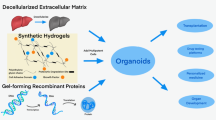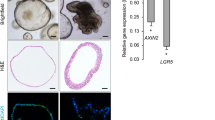Abstract
THE role of macromolecules in cell cultures remains obscure. For this reason tissue culture media are supplemented with serum or with purified protein fractions. In some instances other macromolecules, for example, carboxymethyl cellulose, are used1.
This is a preview of subscription content, access via your institution
Access options
Subscribe to this journal
Receive 51 print issues and online access
$199.00 per year
only $3.90 per issue
Buy this article
- Purchase on Springer Link
- Instant access to full article PDF
Prices may be subject to local taxes which are calculated during checkout
Similar content being viewed by others
References
Holmes, R., and Wolfe, S. W., J. Biophys. Biochem. Cytol., 10, 389 (1961).
Michl, J., Exp. Cell Res., 23, 324 (1961).
Michl, J., Neoplasma, Supp. 1, 7, 75 (1960).
Michl, J., Exp. Cell Res., 26, 129 (1962).
Ledvina, M., Mukoproteidy v organismu (SZdN, Praha, 1958).
Rappaport, C., Poole, J. P., and Rappaport, H. P., Exp. Cell Res., 20, 465 (1960).
Author information
Authors and Affiliations
Rights and permissions
About this article
Cite this article
MICHL, J. Probable Function of Macromolecules in Tissue Culture. Nature 202, 1133–1134 (1964). https://doi.org/10.1038/2021133b0
Issue Date:
DOI: https://doi.org/10.1038/2021133b0
This article is cited by
-
Interaction of the LM cell surface with methylcellulose and vaccinia virus
In Vitro (1971)
-
Use of Carbowax as a high molecular weight nonprotein substance for cultivation of lymphoid cell and study of their morphology
Folia Microbiologica (1967)
-
Carbamyl Phosphate as an Essential Component of the Flattening Factor for Cells in Culture
Nature (1965)
Comments
By submitting a comment you agree to abide by our Terms and Community Guidelines. If you find something abusive or that does not comply with our terms or guidelines please flag it as inappropriate.



